Amazon ppc
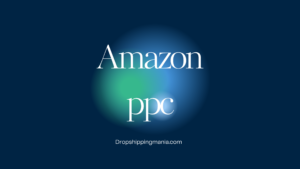
For many companies, Amazon Pay-Per-Click (PPC) campaigns are an invaluable way to market their products and services. By utilizing the power of Amazon’s platform, you can target specific customer groups and increase your sales. But running a successful campaign requires specific strategies and tactics—which is why it’s important to understand the fundamentals of Amazon PPC before jumping in. In this blog post we will cover the basics of Amazon PPC and provide you with insights on how to create successful campaigns that will help drive sales. Read on to learn more about the ins and outs of Amazon PPC!
Why is Amazon PPC important?
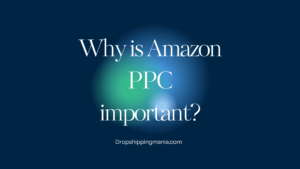
Amazon PPC is important because it allows you to control your product’s visibility on Amazon. When you invest in Amazon PPC, you are essentially buying ad space on Amazon, which gives you the ability to put your product in front of buyers who are already searching for what you sell.
Amazon PPC also allows you to track your sales and ROI (return on investment) data so that you can see how effective your ads are and adjust your campaign accordingly. Without Amazon PPC, it would be much harder to track your sales data and optimize your campaigns.
Investing in Amazon PPC is important if you want to be successful on Amazon. It is a key part of an effective Amazon marketing strategy and can help you boost your sales and grow your business on the platform.
What are the 3 types of Amazon PPC ads?
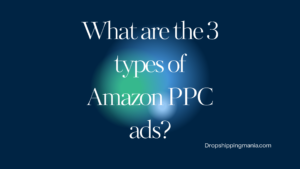
There are three types of Amazon PPC ads:
1. Sponsored Products
2. Headline Search Ads
3. Product Display Ads
1. Sponsored Products are pay-per-click ads that appear in search results and on product detail pages on Amazon.com. When a shopper clicks on a Sponsored Product ad. They are take to the product’s detail page where they can learn more about the product and make a purchase.
2. Headline Search Ads are banner ads that appear at the top of search results pages on Amazon.com .When shoppers search for keywords that match your ad campaign’s keyword list. When a shopper clicks on a Headline Search ad, they are take to your website or Amazon storefront where they can learn more about your products and make a purchase.
3. Product Display Ads are banner ads that feature one or more of your products and appear on relevant product detail pages, category pages, and search results pages on Amazon.com. Product Display Ads can help shoppers discover new products and encourage them to consider additional purchases from your brand. When a shopper clicks on a Product Display ad. They are taken to the product’s detail page where they can learn more about the product and make a purchase
How much is Amazon PPC?
When it comes to Amazon PPC, there is no one-size-fits-all answer to the question of how much you should spend. However, there are some general guidelines that can help you determine an appropriate budget for your campaign.
First, consider your goals for the campaign. Are you looking to generate more sales, increase brand awareness, or something else? Once you know what you want to achieve, you can start to think about how much money you’re willing to invest in order to reach your goals.
Next, look at your average order value and calculate how many conversions you’ll need in order to reach your goal. For example, if you’re looking to generate an additional $1,000 in sales and your average order value is $100, then you’ll need 10 additional sales.
Finally, consider your margins and calculate how much you can afford to spend on each conversion. For example, if your profit margin is 20%, then you can afford to spend up to $20 per conversion.
What skills are required for PPC?
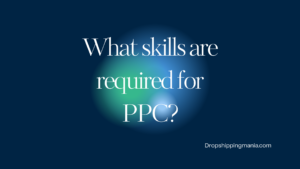
PPC, or pay-per-click, is an advertising model in which advertisers can bid on keywords and phrases that are relevant to their product or service in order to appear in search engine results pages. In order for a campaign to successful, it is important to understand the skills that are require for PPC.
Some of the skills that are require for effective PPC campaigns include:
1. Keyword research: In order to identify the keywords and phrases that are most relevant to your product or service. You will need to do extensive keyword research. This can be done using tools like Google AdWords Keyword Planner and Moz Keyword Explorer.
2. Campaign setup and management: Once you have identified the keywords you want to target. You will need to set up your campaign in a tool like Google AdWords or Bing Ads. Once your campaign is set up. You will need to regularly monitor it and make adjustments as necessary in order to ensure that it is performing optimally.
3. Landing page optimization: It is important to make sure that the landing pages for your ads are optimize in order to improve conversion rates. This includes ensuring that the pages are relevant to the keywords you are targeting. As well as making sure that the pages are user-friendly and have a strong call-to-action.
4. Tracking and reporting: In order to track the performance of your campaign and measure your return on investment, you will need to
What is the best PPC strategy?
PPC, or pay-per-click, is a digital marketing strategy in which advertisers pay a fee for each time their ad is click. PPC can an effective way to drive traffic to your website and generate leads, but it’s important to have a well-defined strategy in place before you start spending money on ads.
There are a few different types of PPC campaigns you can run on Amazon: product ads, Sponsored Products, and Headline Search Ads. Each type of campaign has its own set of best practices, so it’s important to choose the right one for your goals.
Product ads are image-base ads that promote individual products on Amazon. These ads are display on product detail pages and search results pages. And they can targeted to specific keywords or products.
Sponsored Products are text-based ads that appear on search results pages and product detail pages. These ads can targeted to specific keywords or products. And they can be customized with your own headline and call to action.
Headline Search Ads are text-based ads that appear at the top of the search results page. These ads can targeted to specific keywords, and they can include up to three lines of text plus a call to action.
No matter which type of PPC campaign you’re running on Amazon. There are a few key things to keep in mind:
Set a budget: Decide how much you’re willing to spend on
Why is PPC better than SEO?
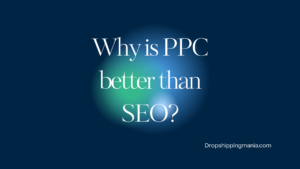
There are a number of reasons why Pay-Per-Click (PPC) advertising is often seen as better than Search Engine Optimisation (SEO). Here are some key reasons:
PPC is immediate – you can set up your campaign and start driving traffic to your site almost immediately. SEO can take months to start seeing results.
PPC is flexible – you can adjust your budget, target different keywords and change your ad copy at any time. With SEO, once you’ve optimised your site. You’re largely stuck with that approach until you want to go through the process again.
PPC allows you to track results – with PPC, you can track how many clicks your ads are getting. What keywords are performing well and how much each click is costing you. This data allows you to fine-tune your campaign for maximum ROI. With SEO, it can be difficult to track which changes are having an impact on your rankings.
In short, PPC provides more control, flexibility and measurable results than SEO.


